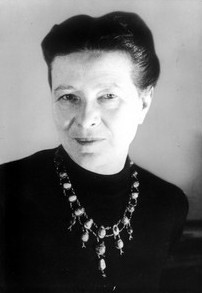IS CANADA TELLING HUNGARY'S ROMA ' DO NOT SEEK ASYLUM HERE'?
FROM THE CHRISTIAN SCIENCE MONITOR
http://www.csmonitor.com/World/Americas/2013/0124/Is-Canada-telling-Hungary-s-Roma-Do-not-seek-asylum-here
The Harper government has launched an ad campaign in the Hungarian city of Miskolc – from which many Roma have migrated to Canada in recent years – warning of tougher immigration laws.
By Bilbo Poynter, Contributor / January 24, 2013
Hamilton, Ontario
Canada has long had an international reputation of welcoming refugees from around the world. But now it's telling Hungary's Roma community that that doesn't apply to them.
The Canadian government is spending approximately $13,000 on an information campaign, including billboards, notices in bus shelters, newspapers, and on radio spots in the Hungarian city of Miskolc, to dissuade would-be Roma asylum-seekers from coming to Canada.
The campaign began on Jan. 15 and, according to a spokesperson for Citizenship and Immigration Canada, is to last one month.
The billboards read, “An announcement from the Government of Canada: To deter abuse, Canada’s refugee system has changed. Asylum claims are evaluated within weeks instead of years. Applicants with unjustified immigration claims are sent home faster.”
A problem with Roma?
The campaign appears to be part of the larger overhaul of the Canadian immigration system implemented by Prime Minister Stephen Harper's government in recent months. The Harper government passed sweeping and controversial changes to the immigration and refugee process here in December. At the time, it hinted at this new move by suggesting that “bogus refugees” would no longer be able to take advantage of Canadian’s generosity – statements widely held to have been directed at Roma coming to Canada.
Now applicants coming from a designated list of “safe countries” will have their hearings streamlined, in most cases within 45 days, and can be detained and deported with no possibility of appeal in the case of a negative decision by the quasi-judicial Immigration and Refugee Board (IRB).
A main focus of Immigration Minister Jason Kenney’s message track in introducing the changes to the law has been the mass migration of Hungarian Roma to Canada since 2008, the year the visa requirement for the EU country was dropped. Mr. Kenney has publicly called this migration “peculiar,” and has seemed to suggest that the migration from Miskolc was organized – raising fears of human trafficking, which the government has vowed to fight.
As was widely expected, Hungary was put on the list of safe countries in December, meaning that refugee applications originating from there are considered baseless by the Canadian government and effectively undermining asylum claims by refugees from the country.
According to the Roma Community Centre in Toronto’s west end, more than 400 Roma families have been granted asylum in Canada by the IRB since 2008.
A beleaguered community in Hungary
Miskolc, in the northeast of the country, is the second-biggest city in Hungary after Budapest, and the locale from which a majority of Roma claimants to Canada come from – as many as 40 percent in 2011, according to Citizenship and Immigration Canada spokesperson Paul Northcott – while Canada accounted for 98 percent of Hungarian refugee claims worldwide in 2011.
Hungary's Roma community has been subject to ongoing abuse in recent years. A 2010 US State Department report on the human rights situation within Hungary cited several instances where Roma rights were apparently violated in and around Miskolc, including the mistreatment of prisoners, police abuses of Roma suspects, and the segregation of Roma schoolchildren.
Miskolc has also seen demonstrations by the far-right Jobbik Party and paramilitary groups against the Roma, and is near where a group of alleged anti-Roma serial killers were active. The trial was postponed earlier this week while defense counsel is replaced.
Quoting a Hungarian government spokesperson, Hungarian news agency MTI reported earlier this week that Kenney wrote the Hungarian interior minister ahead of the publicity campaign to thank him for his efforts at integrating the Roma into Hungarian society, and chalking up the timing of the ads to “internal problems” within Canada – the nature of the “internal problems” was not specified.
Meanwhile, the mayor of Miskolc, Akos Kriza, upset that the Canadian ad campaign has singled out his community, was quoted by MTI as saying, “Canada will not send its asylum seekers back.” Mr. Kriza is quoted elsewhere as saying that Miskolc will not welcome back repatriated Roma refugee claimants arriving from Canada.
In a November interview, Kenney spoke about his October fact-finding mission to Hungary, that included a visit to Miskolc.Kenney expressed concern that abuse of Canada's immigration system had become routine among the Roma. “The impression I got most clearly from my meetings, when I went to a Roma village near Miskolc, and met with local community leaders in that city ... was that there was a view in the community that coming to Canada through this means was a kind of normal, generally accepted form of migration,” says Kenney.
Downplaying the problem?
Critics say the Harper government's publicity campaign in Hungary, particularly its anti-Roma bent, is wholly inappropriate.
“I am really perturbed the minister is spending money on advertising to suggest how unwelcoming they’ve become,” says Jinny Sims, the Canadian New Democratic Party’s immigration critic. Ms. Sims points out that 150 people from Hungary were accepted as legitimate refugees by the IRB in 2011 alone.
“I don’t think we can say that [Hungary] is a safe country. I can remember reading comments made by the minister to say how terrible the persecutions were when he was over there in Eastern Europe,” she says.
The minister has been criticized in the past for inflaming anti-Roma sentiment and downplaying the human rights situation in Hungary.
One of those critics is Gina Csayni-Robah, the executive director of the Roma Community Centre. She sees many of Canada’s Roma refugee hopefuls through her doors.
Ms. Csayni-Robah points to the minister’s comments at a press conference last April, when he discussed a similar Canadian brochure campaign in the Miskolc region, and to comments attributed to the minister on a popular primetime Hungarian news magazine show. "Being a refugee is not just about whether they like the state they're living in or not, and it's not about whether life is easy there or not, nor is it about occasional acts of discrimination," Kenney is reported as saying.
This newest campaign is, “adding insult to injury,” says Csayni-Robah. Though the minister has already gotten what he wanted, says Csayni-Robah, as she doesn’t know of any new asylum cases since December, when the law took effect, she gets reports of deportations “every day.”








 Nina Simone sings a tribute to Martin Luther King Jr. three days after his murder.
Nina Simone sings a tribute to Martin Luther King Jr. three days after his murder. Poem for MLK Day
Poem for MLK Day PLEASE ENJOY THIS PERFORMANCE BY ROBY LAKATOS
PLEASE ENJOY THIS PERFORMANCE BY ROBY LAKATOS PROTECTING ROMA REFUGEES: A UNIQUE PERSPECTIVE
PROTECTING ROMA REFUGEES: A UNIQUE PERSPECTIVE.jpg)


 Discovery Network: Remove racist programming ("Gypsy" Sisters) from their subsidiary, The Learning Channel.
Discovery Network: Remove racist programming ("Gypsy" Sisters) from their subsidiary, The Learning Channel.





